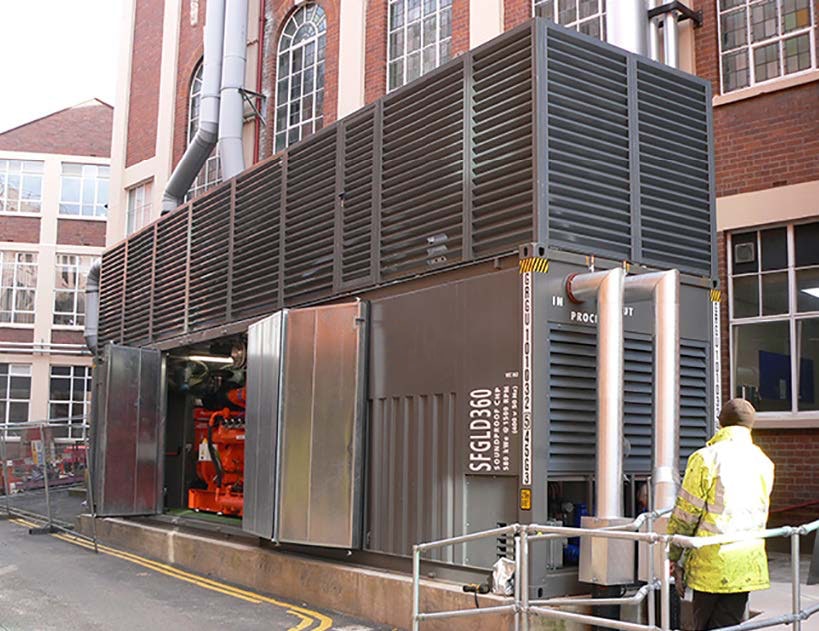CHP Solution Helps University Meet Carbon Emissions Goals
Benefits
The Opportunity:
The University of Wolverhampton, UK, has been engaged in a unique carbon management program to reduce carbon emissions by 25% (against a 2007/2008 baseline) by 2015. Amidst strong competition, the University of Wolverhampton was one of 10 such universities chosen to take part in the UK’s Higher Education Carbon Management Program in 2008.
As part of this carbon reduction program, the University had been operating two combined heat and power (CHP) systems, supplied by Guascor Energy Engines, at its Walsall campus. CHP, or cogeneration, is the simultaneous generation of useable heat and power in a single process that uses the heat produced in electricity generation rather than releasing it into the atmosphere. CHP is an extremely efficient process and has proven to lower utility costs. Also, because less fuel is combusted, CHP reduces the emission of greenhouse gases. Each of the CHP units generates 119kw of electrical power and is simultaneously capable of producing a maximum of 198 kw of heat in the form of low-pressure hot water. These two units provide heat and power to multiple buildings across the campus, including the Performance Hub, swimming pool and teaching and administrative buildings.
To further reduce the carbon impact of the University’s activities on the environment and boost its green credentials, the University opted to purchase an additional CHP system to provide heat and electricity for all its south campus buildings and further reduce the University’s carbon emissions. This brings the total to three packages purchased by the University.
The Solution
The CHP unit was installed at the City Campus South in Wolverhampton, between two university buildings off Deanery Row.
The containerized package consists of a Guascor Energy Engines SGE-36SL generator set running with natural gas. It is fully packaged and noise insulated as follows: generation machinery room, air ventilation silencer, exhaust ventilation equipment, exhaust CHP equipment, CHP control room, control and power cabinets, gas ramp, natural gas blower, and main and auxiliary circuit recovery systems. Each system will generate 581 kW of electricity and produce 798 kW of thermal energy in the form of hot water by recovering the heat from the Guascor Energy engine’s jacket water-cooling circuit and exhaust. The system will also collect 35 kW of thermal energy from the intercooler dump circuit via a plate heat exchanger (PHE) that is used for greenhouse heating. The engine emits low emissions: NOx 250 mg/Nm3.
Guascor Energy Engines will provide comprehensive maintenance and service for the units that will operate around the clock 24 hours a day, seven days a week.
It is estimated that the new CHP system will reduce the University’s carbon emissions by 1,000 tons per year, with an annual savings of $352,000 (£228,600) per year.
The Business
Guascor Energy is a leading company with more than 50 years of experience in the design and manufacture of diesel and gas internal combustion engines with its own technology. The company offers some of the most efficient and environmentally friendly technology platforms, products and services in distributed power generation for oil and gas, industrial, institutional, commercial clients and rural electrification programs. In addition, our offer is completed by a range of diesel engines for marine applications for both propulsion and on-board generation.
A complete product range which meets the strictest regulatory and safety requirements always adapting to the customer´s needs.
Guascor Energy has a network of more than 50 distributors and partners worldwide, which in addition to our own staff, allows us to provide unparalleled proximity and respond to the specific needs of each of our customers at a fast and personalized pace.


